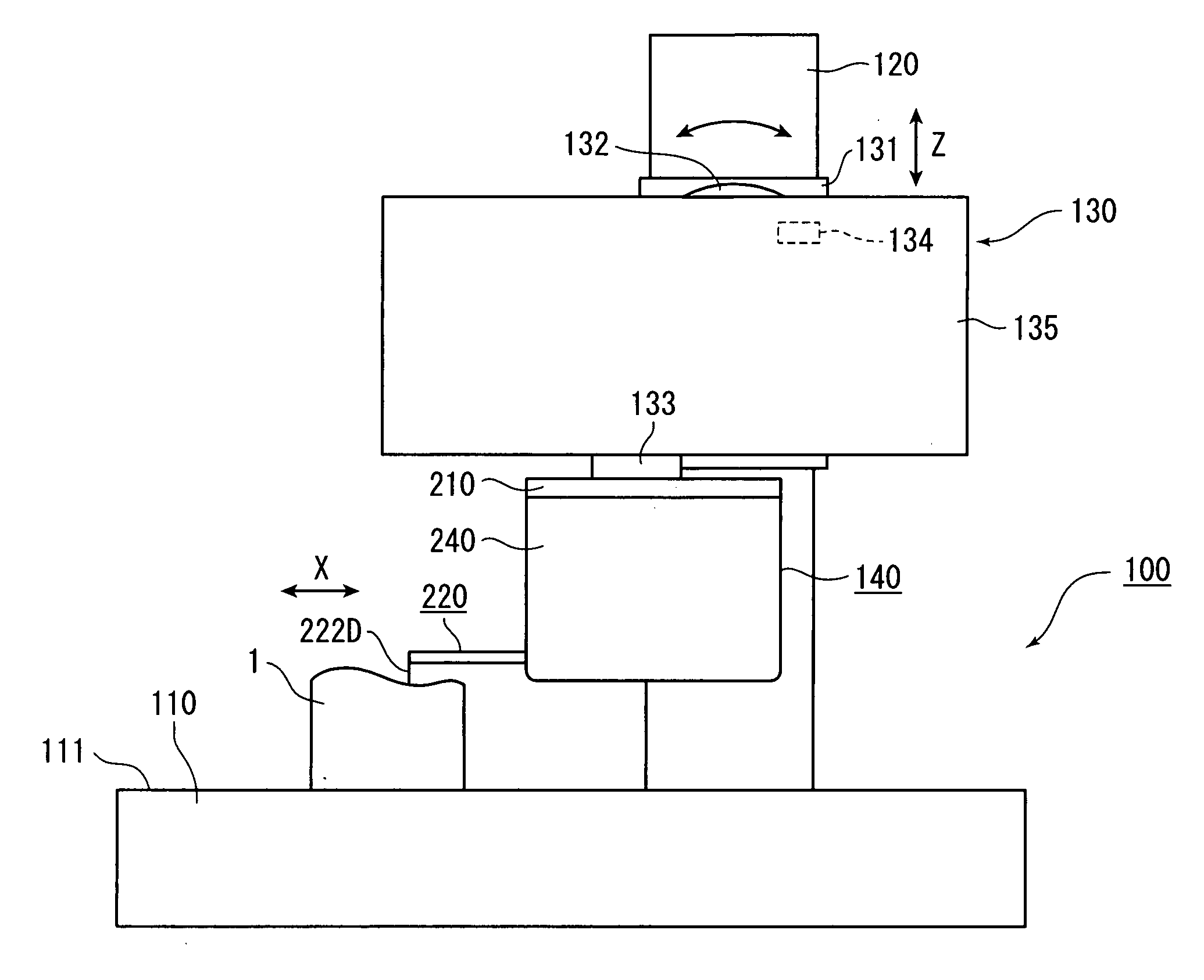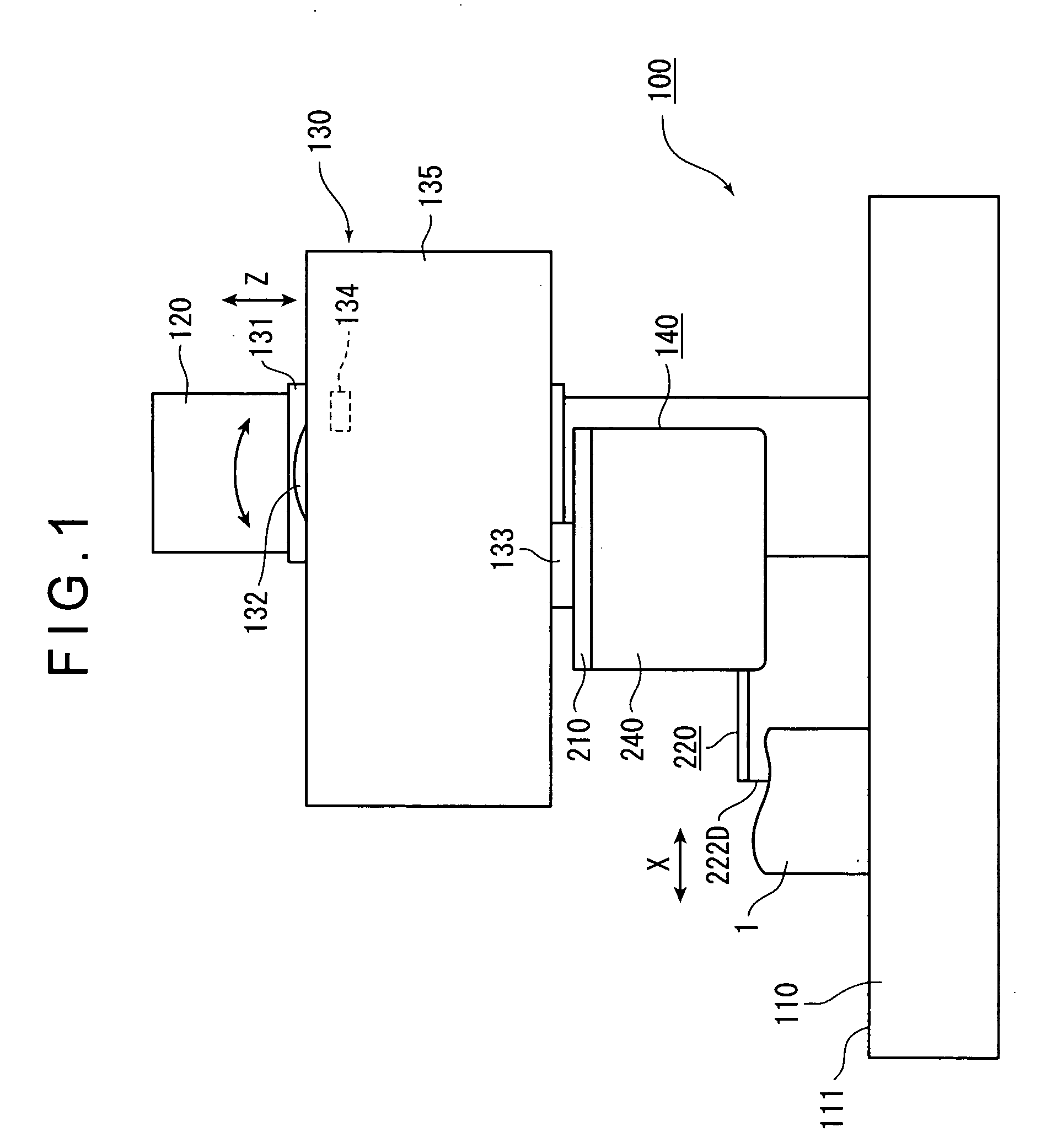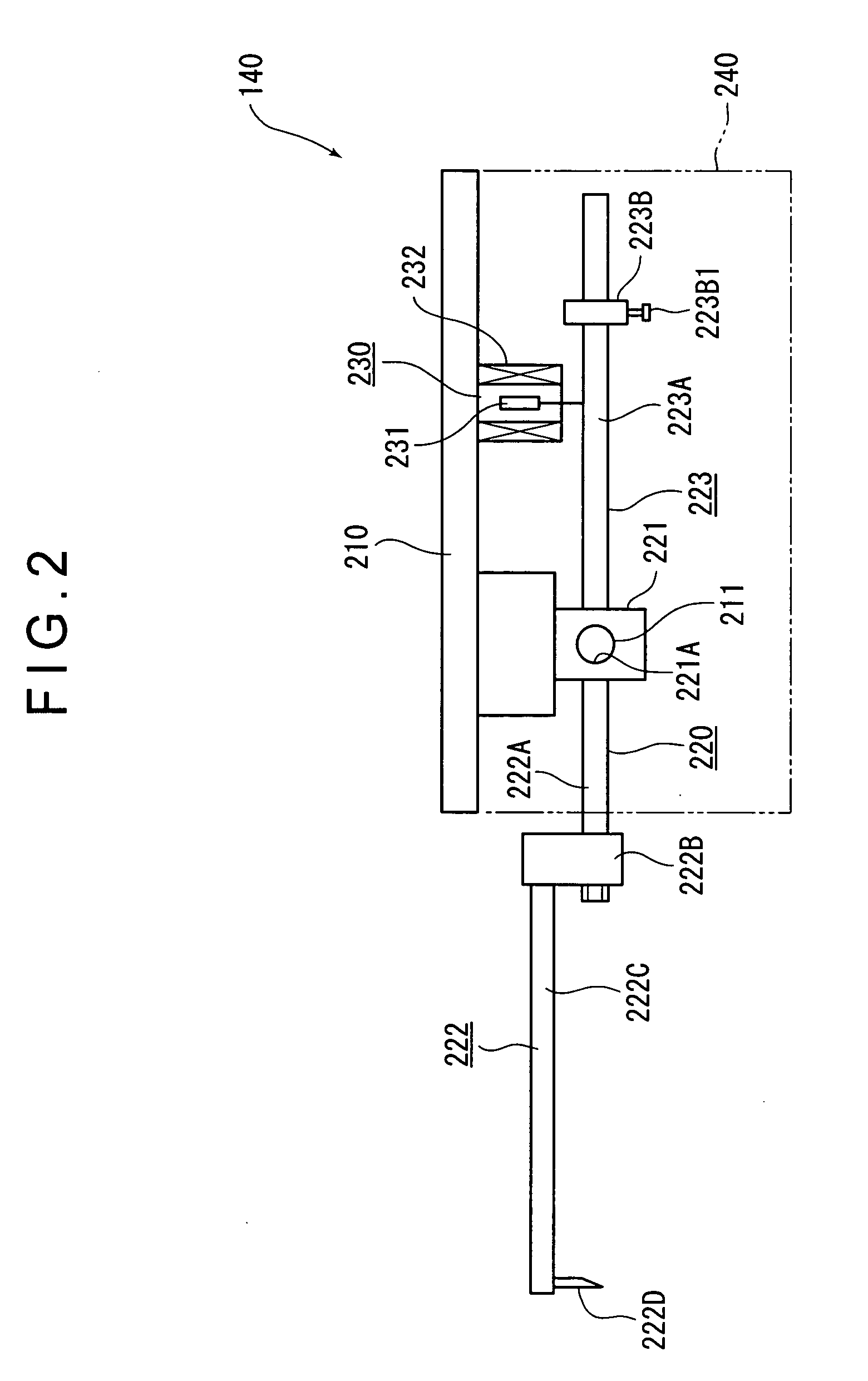Measuring instrument
a technology of measuring instruments and measuring axes, applied in the direction of measuring devices, mechanical roughness/irregularity measurements, instruments, etc., can solve the problems of tracking response, deterioration of the frequency characteristics of the swinging probe, and tracking respons
- Summary
- Abstract
- Description
- Claims
- Application Information
AI Technical Summary
Benefits of technology
Problems solved by technology
Method used
Image
Examples
Embodiment Construction
)
[0032] An arrangement of a measuring instrument according to an embodiment of the present invention will be described below with reference to attached drawings. Incidentally, though a surface-tracking measuring instrument will be described in the present embodiment, the present invention may be applied to other type of measuring instrument. FIG. 1 is a schematic illustration showing an outline of the measuring instrument. FIG. 2 is a schematic illustration showing an outline of the body of the measuring instrument. FIG. 3 is an illustration showing how the measuring instrument works. FIG. 4 is an illustration showing the centroid position of an arm.
[0033] (Structure of Measuring Instrument)
[0034] In FIG. 1, 100 denotes a measuring instrument, the measuring instrument 100 being a surface-tracking measuring instrument for measuring a shape of a workpiece 1. The measuring instrument 100 has a base 110, a column 120, a moving section 130 and a body 140.
[0035] The base 110 is held and f...
PUM
 Login to View More
Login to View More Abstract
Description
Claims
Application Information
 Login to View More
Login to View More - R&D
- Intellectual Property
- Life Sciences
- Materials
- Tech Scout
- Unparalleled Data Quality
- Higher Quality Content
- 60% Fewer Hallucinations
Browse by: Latest US Patents, China's latest patents, Technical Efficacy Thesaurus, Application Domain, Technology Topic, Popular Technical Reports.
© 2025 PatSnap. All rights reserved.Legal|Privacy policy|Modern Slavery Act Transparency Statement|Sitemap|About US| Contact US: help@patsnap.com



